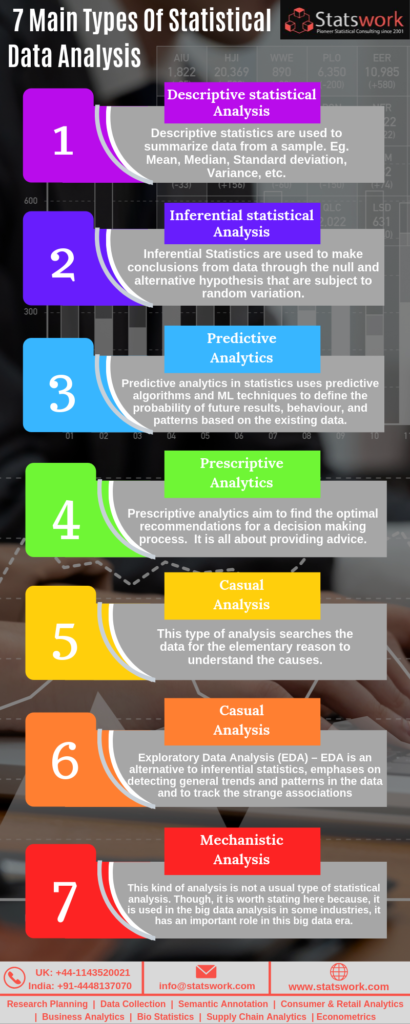

- #STATISTICAL TOOLS FOR DATA ANALYSIS IN RESEARCH HOW TO#
- #STATISTICAL TOOLS FOR DATA ANALYSIS IN RESEARCH SOFTWARE#
- #STATISTICAL TOOLS FOR DATA ANALYSIS IN RESEARCH CODE#
For instance, for measuring a construct such as “benefits of computers,” if a survey provided respondents with a checklist of b enefits that they could select from (i.e., they could choose as many of those benefits as they wanted), then the total number of checked items can be used as an aggregate measure of benefits. Sometimes, data may need to be aggregated into a different form than the format used for data collection. Ratio scale data such as age, income, or test scores can be coded as entered by the respondent. Nominal data such as industry type can be coded in numeric form using a coding scheme such as: 1 for manufacturing, 2 for retailing, 3 for financial, 4 for healthcare, and so forth (of course, nominal data cannot be analyzed statistically).

#STATISTICAL TOOLS FOR DATA ANALYSIS IN RESEARCH CODE#
For instance, if we have a measurement item on a seven-point Likert scale with anchors ranging from “strongly disagree” to “strongly agree”, we may code that item as 1 for strongly disagree, 4 for neutral, and 7 for strongly agree, with the intermediate anchors in between.

#STATISTICAL TOOLS FOR DATA ANALYSIS IN RESEARCH HOW TO#
A codebook is a comprehensive document containing detailed description of each variable in a research study, items or measures for that variable, the format of each item (numeric, text, etc.), the response scale for each item (i.e., whether it is measured on a nominal, ordinal, interval, or ratio scale whether such scale is a five-point, seven-point, or some other type of scale), and how to code each value into a numeric format. A codebook should be created to guide the coding process. Coding is the process of converting data into numeric format. Data preparation usually follows the following steps.ĭata coding. This data must be converted into a machine -readable, numeric format, such as in a spreadsheet or a text file, so that they can be analyzed by computer programs like SPSS or SAS. In research projects, data may be collected from a variety of sources: mail-in surveys, interviews, pretest or posttest experimental data, observational data, and so forth. Readers are advised to familiarize themselves with one of these programs for understanding the concepts described in this chapter.
#STATISTICAL TOOLS FOR DATA ANALYSIS IN RESEARCH SOFTWARE#
Much of today’s quantitative data analysis is conducted using software programs such as SPSS or SAS. In this chapter, we will examine statistical techniques used for descriptive analysis, and the next chapter will examine statistical techniques for inferential analysis. Inferential analysis refers to the statistical testing of hypotheses (theory testing). Descriptive analysis refers to statistically describing, aggregating, and presenting the constructs of interest or associations between these constructs. Numeric data collected in a research project can be analyzed quantitatively using statistical tools in two different ways.


 0 kommentar(er)
0 kommentar(er)
